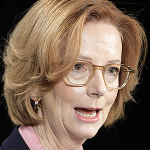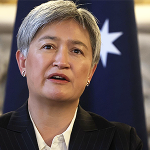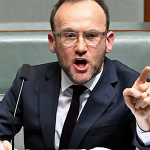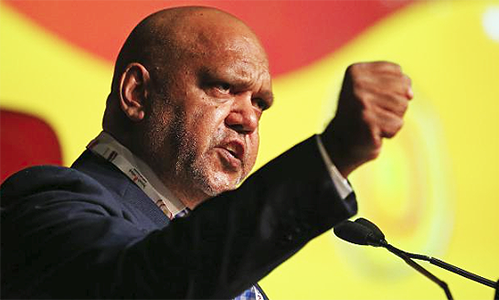From the National Press Club: Australia has had record numbers of business failures on top of declining productivity. That means declining living standards. The Treasurer’s Budget will provide 70 cents a day in tax cuts and aggregate deficits of some $180 billion over the next five years. Mr Chalmers says we’ve ‘turned the corner’ in the cost-of-living crisis.
But what will Shadow Treasurer Angus Taylor do?
The Budget relies on Treasury forecasts of public sector growth slowing and private sector growth increasing magically from July 2026. The stimuli the Treasurer has provided for in the Budget include an extra cup of coffee each week from July 1, 2026, and more green steel and hydrogen as part of its Future Made in Australia plan.
In my opinion, the Budget’s ambitious forecasts are supported by ideologies parading as commerce and industry. Green steel and hydrogen may exist, but they’re a long way from being commercially viable, if ever. Continuing to pursue Labor’s strategy can only result in tax increases. This would suit Labor’s left, as higher taxes are a key pillar of social democracy, an economic model that has failed throughout history because it is ultimately unaffordable.
Today, Shadow Treasurer Angus Taylor delivered his post-budget reply at the National Press Club in Canberra.
There was a moment where Mr Taylor held up a bar chart depicting how the cost-of-living crisis has increased expenses in red, apparently twice the size of employee salary increases shown in blue. He said the Coalition wanted to see the red bar go down, not the blue bar. Some might want to see the figures to support this claim, but anyone who has been shopping lately knows it is for the most part true.
The Reserve Bank confirmed this yesterday by holding interest rates steady. Productivity was a major concern. Red tape is clearly a part of the problem.
A key platform of Mr Taylor’s red-tape-cutting reform is to establish a new statutory body within the Treasury. While he did not specify specific reforms of the department, the last major reform of the departmental side of things occurred when John Howard was Treasurer, splitting the Department of Finance from the Treasury in what is now considered an important arrangement – effectively separating the economists from the accountants.
The difference then was that Treasury Secretary, Sir Frederick Wheeler, was fiscally conservative and sceptical of Whitlam’s spending spree.
Today, of course, an impartial spectator could rightfully argue that Treasury is all in on Albo’s game.
Yet there are many similarities between now and the 1970s. Cyclone Tracy gave Treasurer Jim Cairns an opportunity to display his leadership as acting Prime Minister. The rumour mill was suggesting a Jim Chalmers’ coup against Albo amid a cyclone (that should have been named Anthony). Fundraisers aside, there hasn’t been much leadership on display from either side of politics for those Queenslanders affected by the resulting flood waters.
But a statutory body, while a good idea and an effective governance mechanism in principle, can only do its job properly if it is allowed to do its job independently. We’ve seen Infrastructure Australia become ineffective soon after its inception, and if Mr Chalmers had had his way, the Reserve Bank would be willingly toeing the party line.
Of course, Labor building up the public service by 40,000+ people makes a perfect straw man for an Opposition seeking budget cost savings.
At the same time, and despite rhetoric to the contrary, the hardworking people at the Department of Veterans Affairs still face a backlog of some months to process claims. It makes one wonder what the additional thousands of public servants are actually doing. A quick look at staffing in the Department of the Prime Minister and Cabinet provides plenty of food for thought. Indeed, Elon Musk would have a field day.
Speaking of Mr Musk, he got a Guernsey in Mr Taylor’s address, giving the mainstream media a free kick that only city folk would find funny. Without Starlink, regional Australia would be disconnected. Along with smaller localised innovations, Starlink has done what the National Broadband Network could only dream of doing. Mocking Mr Taylor’s praise for private sector innovation has only recently become normalised by rent-seekers. (Follow the money if you will.)
Nevertheless, and despite a far too quiet showing so far in the election campaign, the Coalition ought to be wary of the impact of those who see nothing more than a Uniparty election in progress.
The Uniparty concept is a tool used by minor conservative parties to try and eat into the Coalition’s voting base. At the same time, when Mr Albanese and Mr Dutton agree on minimum wage rises and $7.5 billion versus $8 billion in Medicare funding, where there’s smoke there’s fire.
If only harpooning the Coalition for past sins wouldn’t return Labor into power for another three years, it might be an opportunity to force the Coalition to return to its roots. Mr Taylor didn’t disappoint when he alluded to private sector growth and encouraged movement between the private sector and the public service. There are clear benefits to this approach.
However, differentiating the Coalition from Labor is key to getting conservative voters back on side, particularly those who watched the long, slow accident of Scott Morrison’s weak, small target strategy that helped Labor win government in 2022. Trump’s big target strategy won big. Much like the Biden era in the US, after the Albo disaster, conservatives want more.
I share in our Editor-in-Chief’s desire for a Dutton Coalition government. The Albanese government has failed on so many measures, but the election is shaping up to be a John Hewson moment for the Coalition.
When Australians are hurting, they want action, not platitudes.
And while they don’t want a Mike Willesee-John Hewson GST birthday cake detail moment, they deserve at least some detail in deciding our nation’s economic future.
History suggests that though even Whitlam got a second chance, Australians paid for it. But like the 1993 election, this is the unlosable election for the Coalition.
How will Angus Taylor assure Australians that if he becomes Treasurer, we won’t be turning the corner on the same road and in the same car?
Mr Taylor tells us there’s more to come, but with voters more focused on celebrating Easter and commemorating Anzac Day in the midst of this election campaign, I was hoping we’d know more by now.
Byline: Dr Michael de Percy FRSA FCILT MRSN @FlaneurPolitiq is a political scientist and political commentator. He is a member of the Federal Parliamentary Press Gallery, Editor-in-Chief of the Journal of Telecommunications and the Digital Economy, Chairman of the ACT and Southern NSW Chapter of the Chartered Institute of Logistics and Transport, and a member of the Australian Nuclear Association. Michael is a graduate of the Royal Military College, Duntroon and was appointed to the College of Experts at the Australian Research Council in 2022. All opinions in this article are the author’s own.









